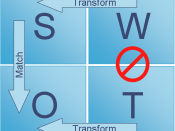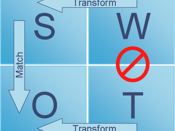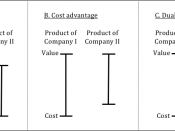RESOURCE-BASED-VIEW OF A FIRM
LITERATURE REVIEW 3
Introduction- What is the Resource-Based-View of a Firm? 3
Resource-Based-View -Background 3
Resources & Capabilities of a Firm 4
Firm Resources & Sustainable Competitive Advantage 5
Value 5
Rareness 6
Inimitability- Is it hard to copy? 6
Non- Substitutability 7
Durability 7
Imperfect Mobility 8
Appropriability- Who captures the value the resource creates? 8
Competitive Superiority 9
The RBV of a Firm's Ability to Innovate 10
Conclusion 12
CONTEXTUALISATION: RBV AND TESCO.COM 14
Introduction 14
Tesco's Resources 14
Tesco Clubcard 14
Use of Existing Retail Stores as Distribution Centers 15
Technology Partnership with Interwoven 16
Conclusion 17
REFERENCES 19
Literature Review
Introduction- What is the Resource-Based-View of a Firm?
A Resource-Based-View emphasizes that a firm utilizes its resources and capabilities to create a sustainable competitive advantage that ultimately results in superior value creation and above normal profits. This view combines both the internal and external environments.
There has been much literature written on this topic since the 1980s. In this essay, I will discuss the link between a firm's resources and sustainable competitive advantage and the characteristics and strategic implications of the resource-based-view of a firm.
Resource-Based-View -Background
The Resource Based View of a firm (RBV) has grown in popularity since the late 1980s. It was originally developed by Wernerfelt in 1984 as an attempt to build a solid foundation for the theory of business policy, (Clulow et al, 2003). However, the importance of firm-specific resources was recognized as far back as the 1930s by economists; Chamberlin and Robinson. These economists suggested "that the unique assets and capabilities of firms were important factors giving rise to imperfect competition and the attainment of super-normal profits" (Fahy,1999). This was further developed in 1959 by Penrose who suggested that a firm is more than an administrative...



Good
an excellent essay on resource based view with a case study
0 out of 0 people found this comment useful.